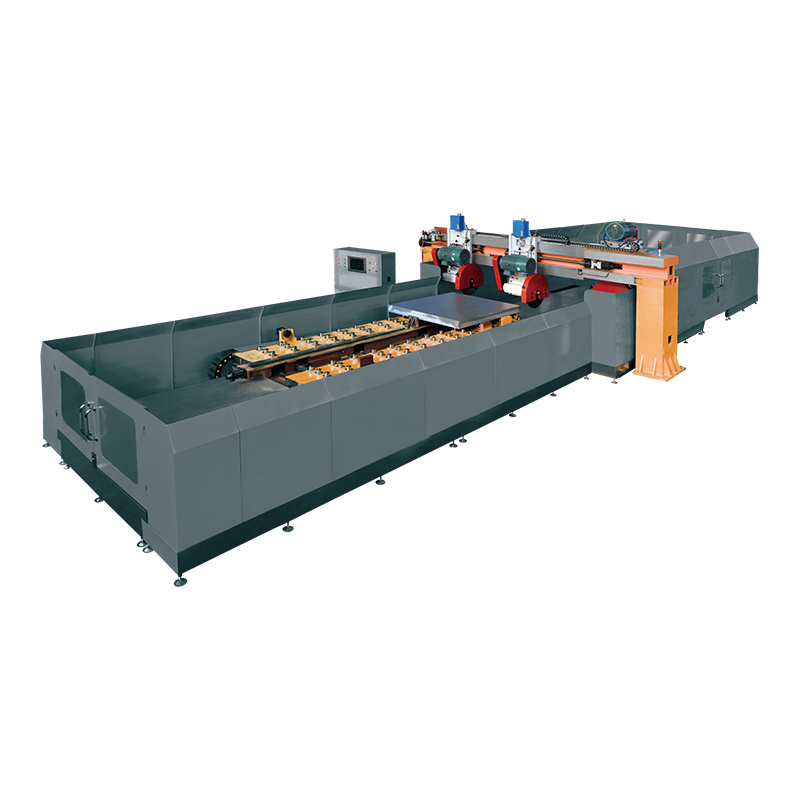Importance of Stability in Continuous Operation
A graphite cutting band saw machine is often required to run continuously to meet high-volume production demands. Continuous operation, however, introduces challenges such as vibration, heat accumulation, blade wear, and potential misalignment, all of which can compromise cutting quality and equipment longevity. Maintaining operational stability is therefore essential to ensure consistent performance, precision, and safety in Graphite Cutting Band Saw Machine operations.

Robust Machine Design and Structural Integrity
The foundation of stability lies in the mechanical design and construction of the machine.
- Rigid frame construction: A strong and well-engineered frame reduces vibration, preventing blade deflection and misalignment during prolonged operation.
- Precision bearings: High-quality bearings in moving parts reduce friction and wobble, allowing smoother, continuous motion.
- Sturdy blade guides: Properly aligned and adjustable blade guides maintain consistent tension and support, keeping the blade stable under load.
Blade Selection and Maintenance
The blade itself is a critical factor in achieving stable operation.
- Durable blade materials: Hardened steel or coated alloys resist wear and maintain cutting precision throughout extended runs.
- Tooth geometry optimization: Selecting the correct tooth pitch and profile for graphite hardness reduces vibration and ensures smoother cuts.
Regular inspection and replacement: Monitoring blade tension, sharpness, and alignment prevents uneven wear and potential blade failure during continuous cutting.
Thermal Management and Cooling Systems
Heat accumulation is one of the significant threats to stability during long periods of operation.
- Water or oil cooling: Continuous coolant flow reduces blade overheating and thermal expansion, preserving accuracy and prolonging blade life.
- Heat-resistant components: Critical parts such as blade guides, motor mounts, and frames made from thermally stable materials maintain structural integrity under prolonged operation.
- Adequate ventilation: Proper airflow around the motor and drive systems prevents overheating and ensures consistent performance.
Vibration Control and Operational Optimization
Reducing vibration is essential for both machine stability and cutting quality.
- Anti-vibration mounts: Mounting key components on dampening pads reduces oscillations transmitted to the machine frame.
- Optimized feed rates: Adjusting the material feed according to graphite density and hardness prevents overloading the blade and maintains smooth operation.
- Electronic monitoring systems: Sensors can detect abnormal vibrations, torque spikes, or temperature fluctuations, allowing operators to respond before stability is compromised.
Maintenance Protocols for Continuous Operation
Even the best-designed machines require systematic maintenance to remain stable under continuous workloads.
- Routine lubrication: Proper lubrication of bearings, guides, and moving parts reduces friction and ensures smooth motion.
- Scheduled inspections: Regular checks for blade wear, alignment, and tension allow timely adjustments to prevent performance degradation.
- Operator training: Skilled operators can monitor machine behavior, adjust feed rates, and respond to unusual vibrations or noises, further enhancing stability.
Achieving Reliable Continuous Performance
Ensuring stability in a graphite cutting band saw machine during continuous operation requires a comprehensive approach combining robust design, precise blade management, effective thermal control, vibration reduction, and diligent maintenance. Each of these factors contributes to consistent cutting performance, extended equipment lifespan, and safe operation. By addressing these considerations, manufacturers can maintain high-quality production outputs while reducing downtime, blade wear, and operational risks. Implementing these strategies ensures that continuous graphite cutting processes remain efficient, precise, and reliable over long periods of use.
